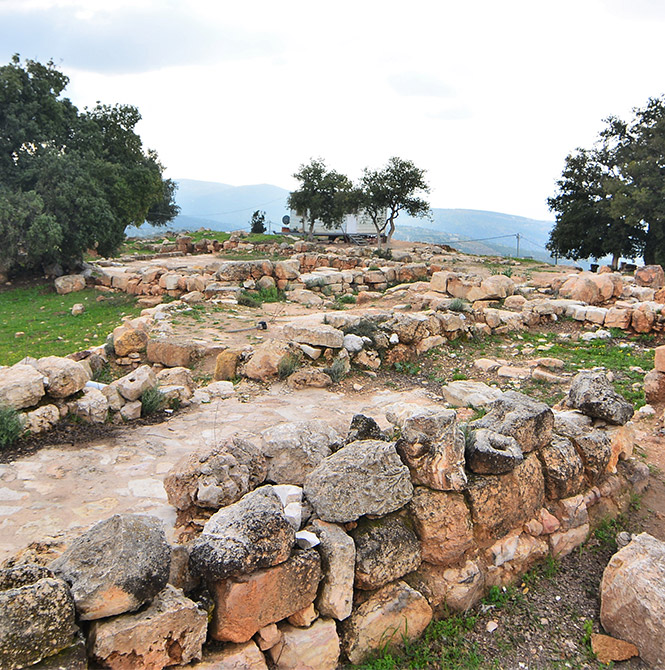
The first book of Kings mentions the home of the prophet Elijah, saying: “Now Elijah the Tishbite, who was of the settlers of Gilead, said to Ahab, “As the LORD, the God of Israel lives, before whom I stand, there shall be neither dew nor rain these years, except by my word.” (1 Kings 17:1). There are many monuments on the site dating back to the Greek, Roman and medieval periods, as well as the remains of one of the largest known Byzantine churches in Jordan. Artifacts found at this site, including marble carvings and small metal tools, can also be seen in the Ajloun Castle Museum.

People have honored the Prophet Elijah since ancient times on the top of the mountain known as “Mar Elias” between the towns of Ashtafina and Al-Wahadna, northwest of Ajloun. This mountain rises 900 meters above sea level and bears traces of a church from the Byzantine era. Not much is known about this church except for what was found of pieces of alabaster, a temple, a lamp and some coins belonging to Emperor Kotsensius II (451-568 AD), which confirms that this church dates back to the fifth or sixth generation.
And the people honor the prophet Elijah on the top of that mountain in particular, because the birthplace of the Prophet Elijah is located one kilometer to the northwest of it, which is the town known as "Lesteb". The first book of Kings mentioned in brief words the homeland of the prophet Elijah, saying: “Elijah the Tishbite, from the Tishbite of Gilead, said to Ahab: Now Elijah the Tishbite, who was of the settlers of Gilead, said to Ahab, “As the LORD, the God of Israel lives, before whom I stand, there shall be neither dew nor rain these years, except by my word” (1 Kings 17:1) Tishbite of Gilead is Lesteb today, and pottery from the Hellenistic and Roman eras, and from the Arab era in the Middle Ages, were found in it, as well as many mosaic stones scattered here and there, and on lamps and ornaments dating back to the Byzantine era. And near Lesteb, one kilometer to the northeast of it, there is a pool with a wall on its eastern and northeastern sides only, because most of it has been dug in the rock.
The Prophet Elijah has a great place among the people of the entire region. The Bible also mentions: “And the word of the LORD came unto him, saying, get thee hence, and turn thee eastward, and hide thyself by the brook Cherith, that is before Jordan. And it shall be, that thou shalt drink of the brook; and I have commanded the ravens to feed thee there.” (1 Kings 17:2-6). As for the aforementioned Crete River, it is today “Wadi Al Yabis,” in reference to Elijah the Prophet. The word “Elias” has changed through the ages to dry, which is why it was recently called “Wadi Al Rayan.”
In 394 AD, the tourist (Egeria) came to the holy lands in 394 AD, and documented her journey in Jordan Valley and its holy places. She took Jerusalem Jericho Road, and after Jericho she walked from Tall Al Ramah to Husban, then returned to the Jordan Valley, heading north, with remembering of Ain Salem 12 kilometers south of Bissan.
The Gospel stated that there was a lot of water, and John the Baptist baptized there before Herod plunged him into prison, and Egeria says: "Near the Jordan Valley, on his mountains from the east, you see the habitat of the Prophet Elijah Al-Shibbi." Remember us the cave that Elijah turned to escape Ahab's face, and the River Crete of the Land Valley, from which he drank and where the crows came with food in the morning and evening.